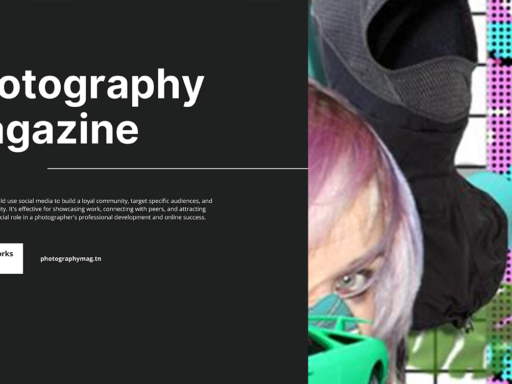When Did Tumblr Make Its Glittering Debut?
Ah, Tumblr. The haunting ground for fandoms, eclectic memes, and oddly specific blogs dedicated to everything from cats wearing hats to existential philosophy—because of course, nothing screams “I need to introspect” like a GIF of a squirrel attempting to water ski. But let’s rewind the clock and set the scene for this digital wonderland.
Tumblr officially launched in February 2007. David Karp, a tech-savvy visionary with a penchant for hipness, birthed this platform with a simple idea: to create a space where users could express themselves through chunks of content, short thoughts, and an entire vibe. It was a veritable utopia for the creative spirits of the world.
The Explosive Growth
So, how did this little platform from 2007 explode onto the scene? Well, buckle up because it was a whirlwind. Just two weeks after it went live, Tumblr raked in a staggering 75,000 users. Yes, you read that right—75,000 eager souls ready to dive into the beautiful chaos of Tumblr’s minimalist design and endless scrolling potential.
Imagine it: college students, budding artists, and introverted teens, all flocking to this new online hub. You could just feel the energy crackle in the air. But how did a little blog platform attract such a crowd within such a short span?
The Magic Ingredients: Power User Engagement
The secret sauce was in its simplicity and flexibility. Unlike its predecessors, which often required intricate coding skills and borderline computer wizardry, Tumblr offered a user-friendly interface. This meant that anyone—whether you had a background in HTML or thought “CSS” was a sandwich—could easily set up shop and start blogging. Check this out:
- Simplicity is Key: Users could effortlessly post short snippets, poems, pictures, videos, quotes, and just about anything that tickled their fancy.
- Customization Galore: The affordance for HTML customization meant that you could either adopt a sleek, professional vibe or “create your own chaos” with glitter backgrounds and blinking text—whatever floated your boat!
- Social Media Wow Factor: The platform allowed reblogging, creating an interconnected tapestry of everyone’s thoughts, which is eerily satisfying to a creative mind (and slightly terrifying if you were someone who took the internet too seriously).
The Tumultuous Growth and Eccentric Community
Thanks to the convergence of fantastic features and that sweet, sweet community, Tumblr became a cozy social media haven. Sure, it boasted a bit of everything—artistic expression, lifestyle blogs, political movements, and outright nonsense—all stitched together by an eccentric, passionate, and sometimes perplexing community.
Think of it as a delightful soup made from equal parts pop culture, memes, and the obscure internet rabbit holes we love to explore at 3 AM. The power of Tumblr meant that anyone could become a content creator, and that anyone often did.
Want to sneaker peek into this treasure trove? Imagine scrolling through those crucial early years, where users exchanged everything from poetry to cat fancies, confused why their blog was gaining traction despite absurd content. They even had a lovely little habit of engaging with a reblog button, which turned ideas into a wild game of telephone—everyone was welcome to join in and remix what they came across.
In Short, What Did We Learn?
So, what did Tumblr teach us? Let’s break it down into bite-sized pieces, so you can retain this knowledge like the digital sponge you are:
- The Birth of a Blogging Revolution: The idea that *everyone* has a voice (and a platform) hit like a spliff on a Sunday afternoon.
- Community is Key: Building a niche community nurtured creativity, chaos, and camaraderie in equal parts.
- Get Creative: Customize your blog until it resembles your personality—a chaotic blend of aesthetics and deepest obsessions.
The Legacy of Tumblr
Fast forward to today? Tumblr has produced some of the most passionate, loyal, and sometimes bizarre subcultures online. From the rise of fandoms that could rival entire armies, to the memeing grandeur that gives birth to the viral content we see on other platforms, Tumblr’s fingerprints are everywhere. Don’t believe me? Just ask a Gen Z’er or a Millennial who spent countless hours arguing about which Harry Potter house they belonged to—or can we just say “Slytherin” and save everyone the trouble?
With its whimsical combination of reblogging, short-form content, and community focus, Tumblr shaped a unique realm in the digital ecosystem. Despite making a bid for more commercial aspirations, Tumblr still remains the nostalgic portal for many—a place of artistic freedom, eccentric expression, and kinship.
So, next time you’re consuming the latest meme explosion, remember, it all began with a little blue logo and bountiful creativity back in February 2007. Whether it was about a melancholy-enveloped angst posted under a black-and-white image or reenactments of pop culture phenomena, Tumblr has been an undeniable cornerstone of digital expression since its glory days.
Now, here’s a cheeky thought: should we all dig into our Tumblr accounts, revive those long-lost blogs, and return to a time when our biggest dilemma was whether to post a cat meme or our best haiku? Ah, embrace the chaotic beauty! In the words of meme lovers everywhere, “do it for the aesthetic.” Happy tumbling!





